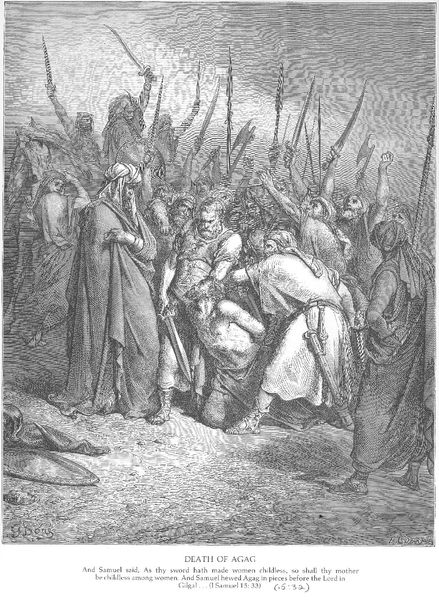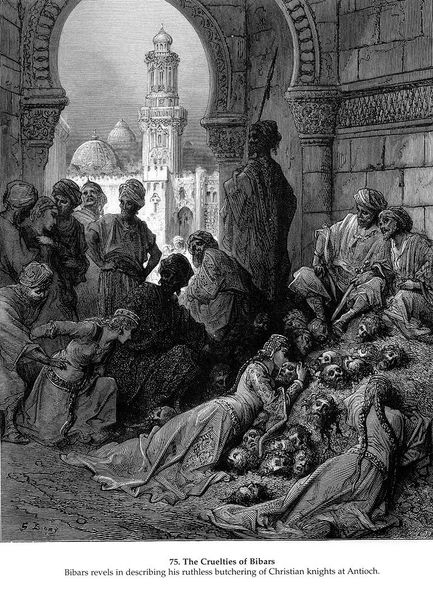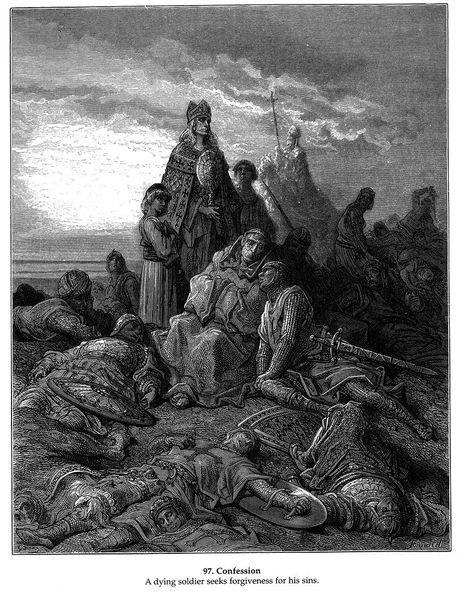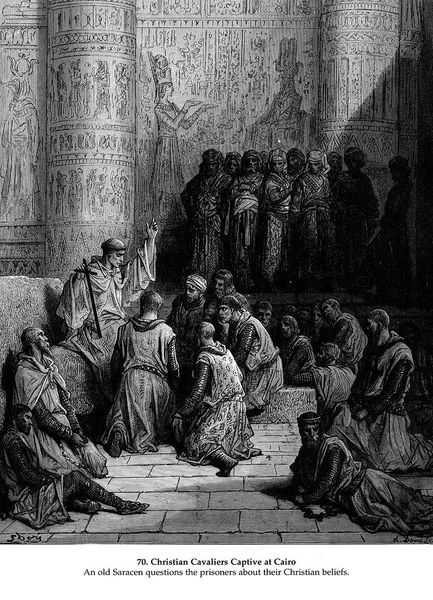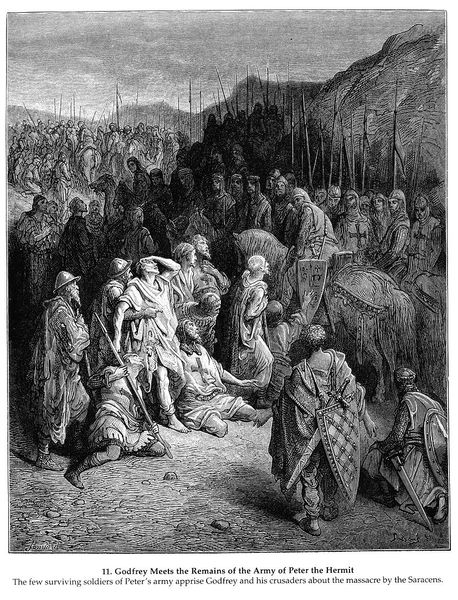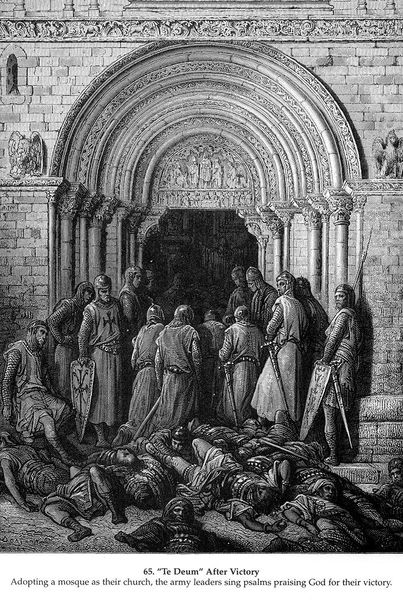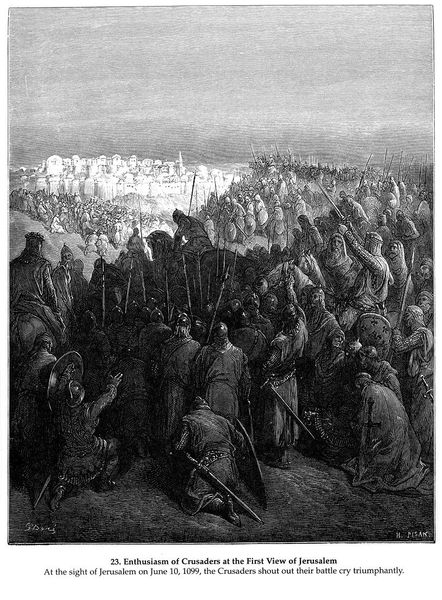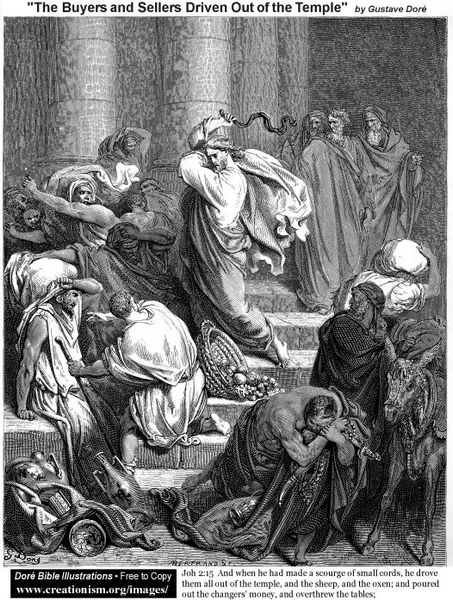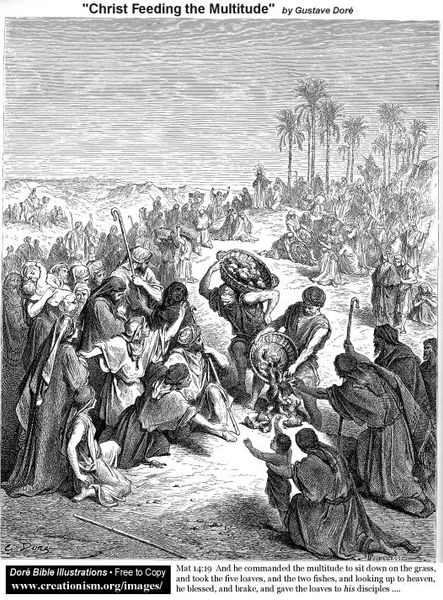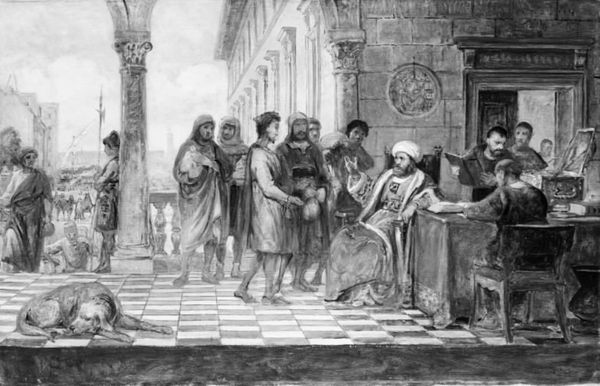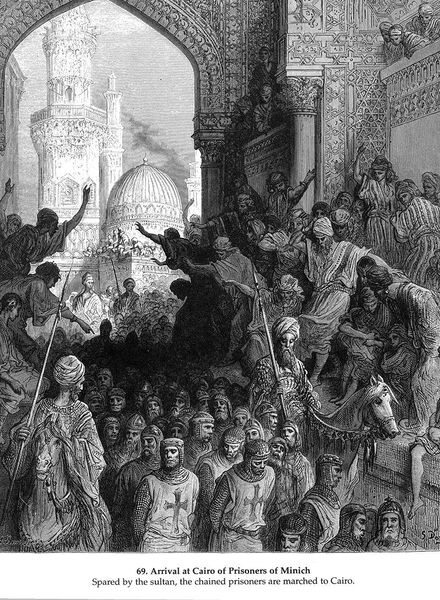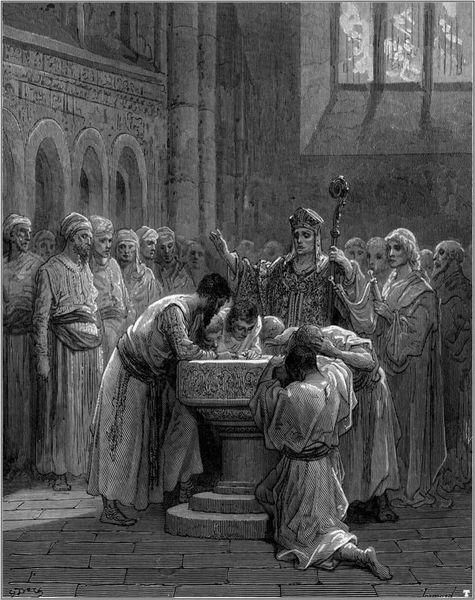
print, engraving
#
medieval
#
narrative-art
# print
#
death
#
sculpture
#
war
#
black and white format
#
figuration
#
black and white
#
history-painting
#
monochrome
#
engraving
#
monochrome
Copyright: Public domain
Curator: This is "Death of Baldwin I, the Latin King of Jerusalem," an engraving completed in 1877 by Gustave Doré. What are your initial impressions? Editor: The somberness is striking, a monochrome lament for lost power. It feels theatrical, carefully staged almost. Curator: Doré was masterful at using black and white to amplify emotional depth. The somber tone aligns perfectly with the event depicted: the death of a crusader king. Note how all figures attending appear burdened. This imagery is far from triumphant or glorious, quite unlike other martial subjects he explored. Editor: Yes, you sense the disillusionment. I’m struck by the sheer volume of armored figures surrounding the deathbed, embodying this militaristic force built around a now-deceased ruler. How much of this is about lost political opportunity following the King's departure? Curator: Undoubtedly the image conveys loss and questions about legacy. It's impossible not to view their symbols of status -- crosses, armaments -- with ambivalence. Symbols mean so much in such representations: not only as icons but in what they evoke as political or martial strength. It might prompt contemporary audiences to reflect on colonialism in relationship to faith, power, and symbolic order. Editor: Absolutely, given the context of 19th-century European imperialism and religious nationalism. Doré gives us this very clean narrative structure for loss, but I wonder if there's an implicit critique within it? Or is he glorifying something lost? The fact that he worked during this era of European history seems vital for an analysis that reveals underlying, politically fraught attitudes. Curator: That duality, I believe, is precisely Doré's genius. The piece certainly acknowledges power, in this case symbolized by armor, weapons and solemn expressions. At the same time, death makes this world seem so fragile. Death confronts earthly, military authority with the ephemeral. The print reveals continuity while also making claims of ephemerality and its consequences. Editor: This invites so many crucial points for reflecting on history, ideology and symbolic expression. Doré's work serves as a historical lens but asks broader, timeless questions about ourselves, even today.
Comments
No comments
Be the first to comment and join the conversation on the ultimate creative platform.
